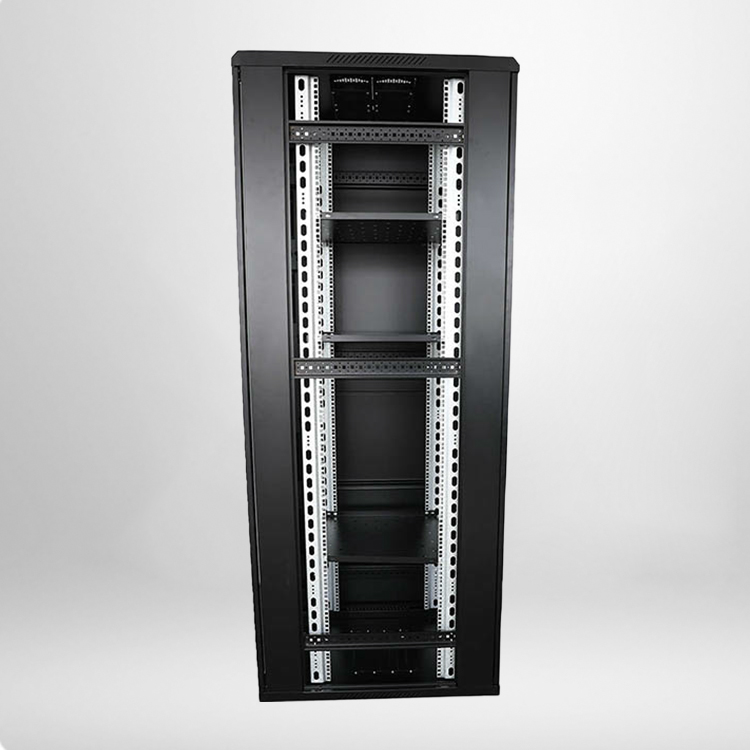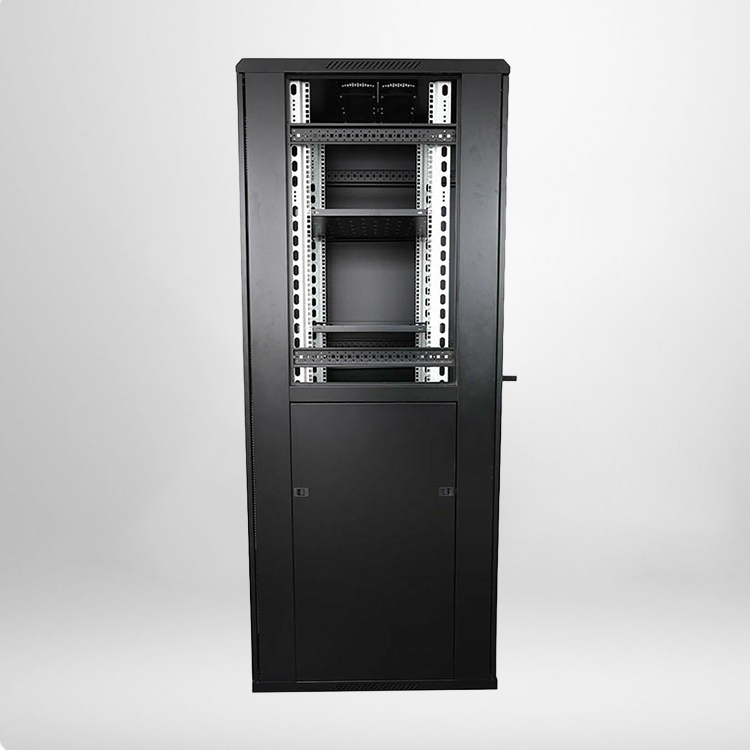
A standing network cabinet 18U of space is a practical solution for organizing and protecting network equipment in various settings, from small offices to data rooms. The “18U” designation refers to the unit height—each “U” equals 1.75 inches (44.45 mm), meaning the cabinet offers approximately 31.5 inches (800 mm) of internal vertical space for mounting devices. This size strikes a balance between compactness and capacity, making it suitable for businesses that need to house essential gear without occupying excessive floor space.
One of the primary advantages of an 18U standing cabinet is its structured design, which helps reduce cable clutter and improve equipment accessibility. Most models include adjustable mounting rails, allowing users to position servers, switches, routers, and patch panels according to their specific needs. This flexibility ensures that devices fit securely while leaving room for airflow—a critical factor in preventing overheating. Many cabinets also feature perforated doors or side panels, which promote passive cooling by allowing hot air to escape and cool air to circulate. For environments with higher heat loads, some 18U cabinets can accommodate optional fans or cooling units to maintain stable operating temperatures.
Durability is another key feature of quality 18U standing network cabinets. They are typically constructed from sturdy materials like cold-rolled steel, which provides protection against physical damage, dust, and even minor moisture. Lockable doors and side panels add an extra layer of security, preventing unauthorized access to sensitive network equipment and reducing the risk of tampering or accidental damage. This makes the cabinet a reliable choice for storing devices that handle critical data or support essential business operations.
Installation and setup of an 18U standing cabinet are designed to be user-friendly. Most units come with pre-drilled holes and included hardware, simplifying the process of mounting equipment and securing the cabinet to the floor (for stability). Cable management features—such as built-in cable rings, tie-down points, or vertical cable channels—help keep cords organized, making it easier to trace and troubleshoot connections later. Additionally, the standing design elevates equipment off the floor, protecting it from potential water damage or dust accumulation that can occur at ground level.

When selecting an 18U standing network cabinet, consider factors like weight capacity (to ensure it can support your equipment), internal dimensions (to fit larger devices), and compatibility with accessories like cable management tools or cooling systems. Whether used in a small business office, a remote work hub, or a satellite data center, this cabinet size provides a versatile, space-efficient solution for managing and protecting network infrastructure. By keeping equipment organized, cool, and secure, an 18U standing network cabinet helps maintain reliable network performance and extends the lifespan of valuable hardware.


